I too am in Paradise II
Te Papa Tongarewa Museum of New Zealand 23 September 2023 – mid 2024
Toi Art, Level 5
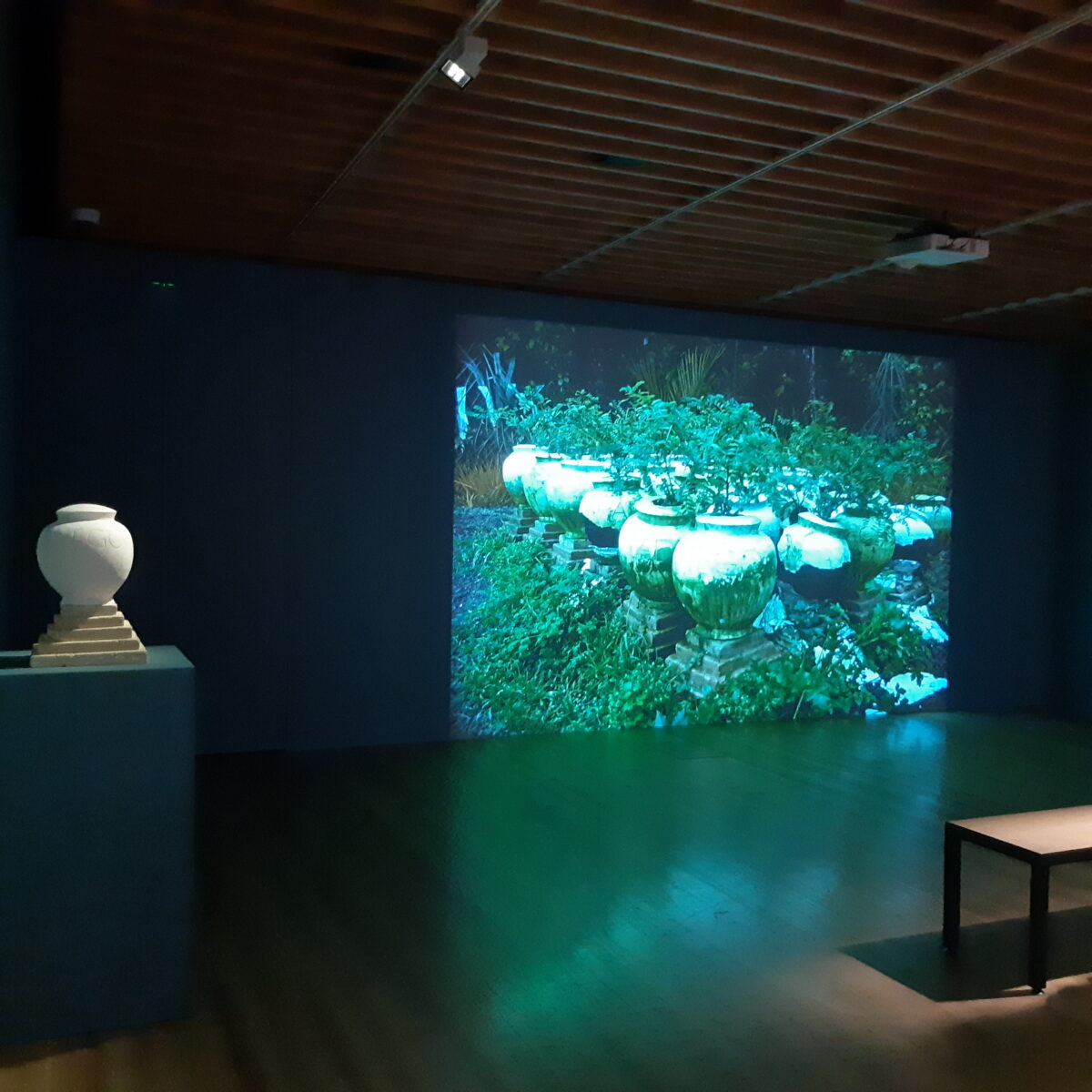
I too am in Paradise II
Te Papa Tongarewa Museum of New Zealand 23 September 2023 – mid 2024
Toi Art, Level 5

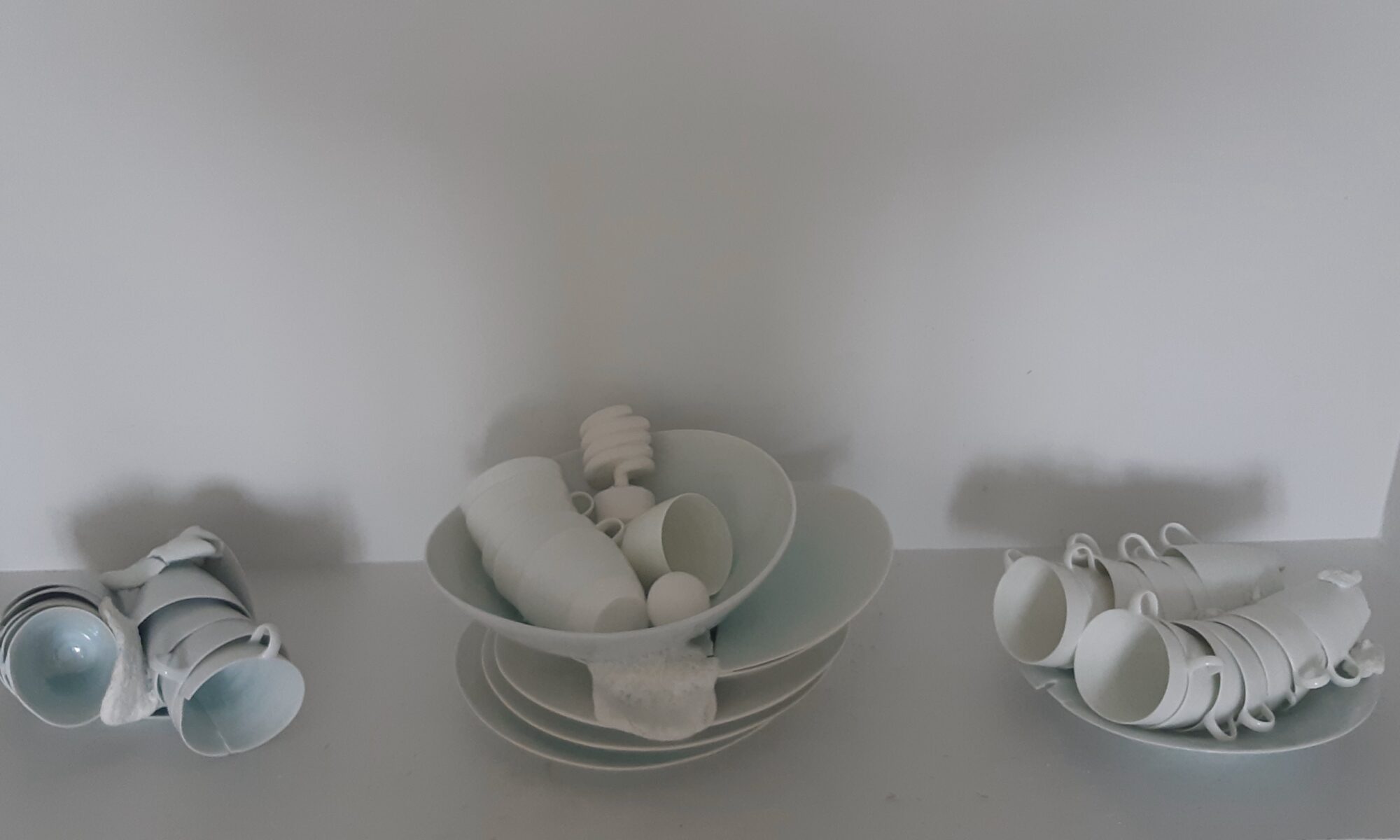
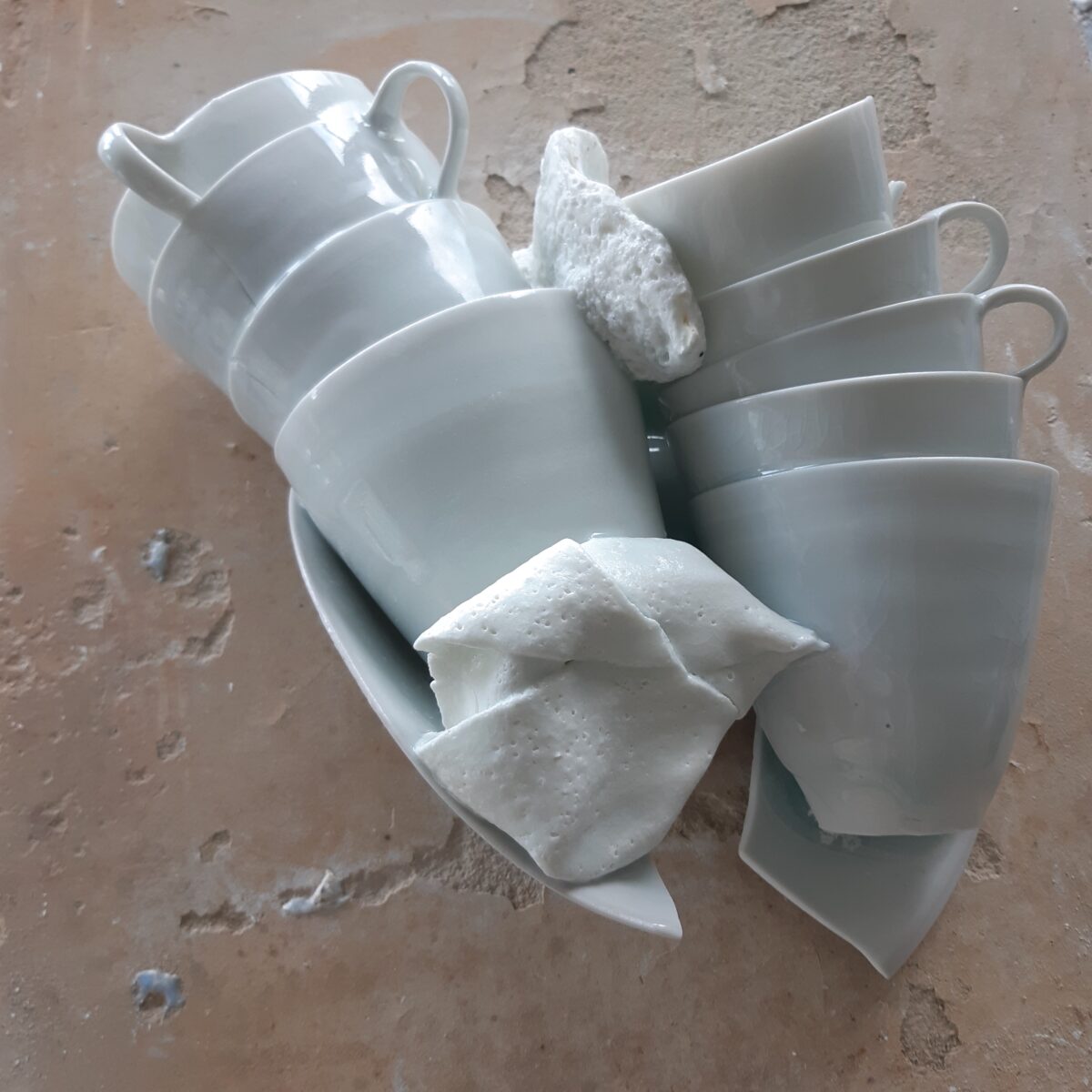
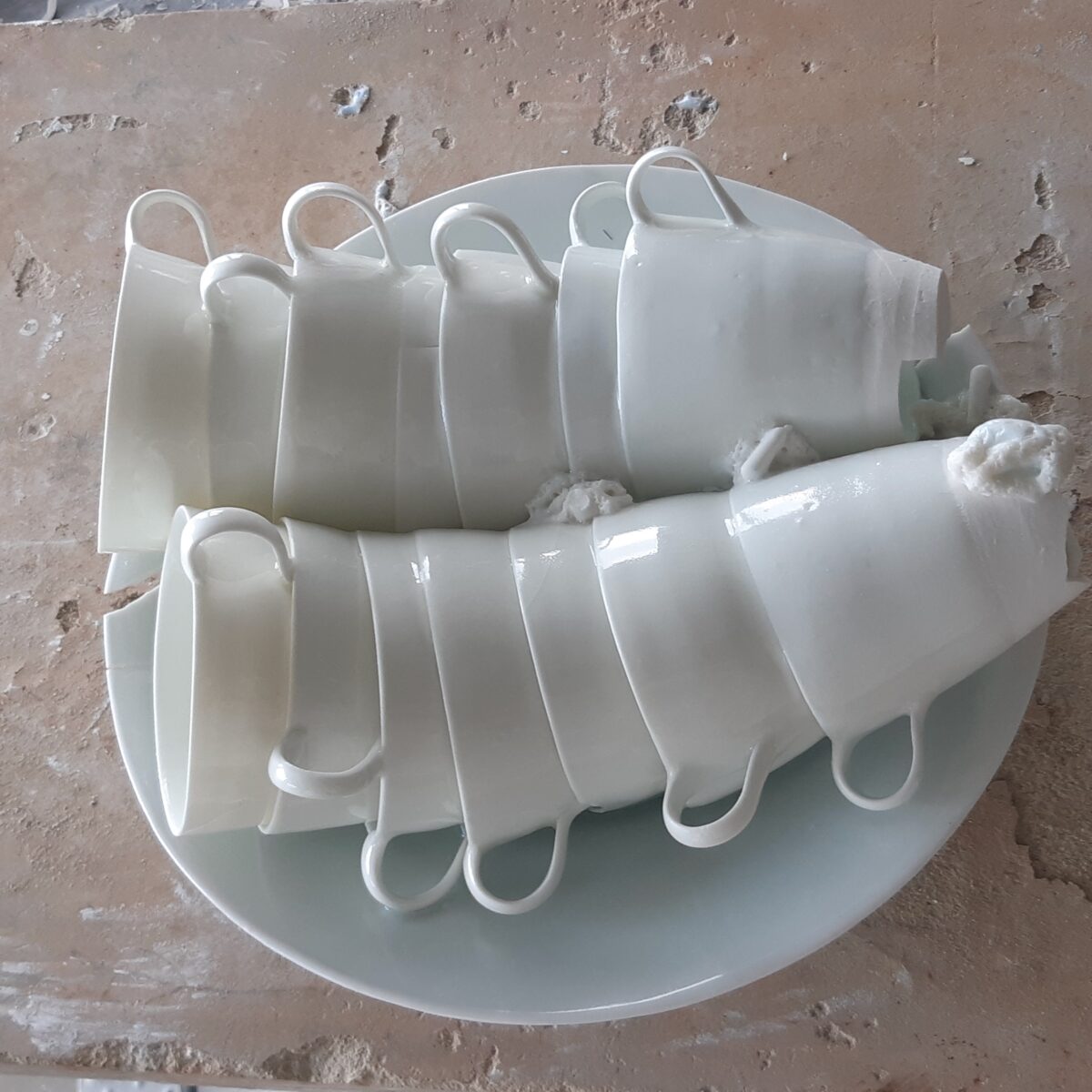
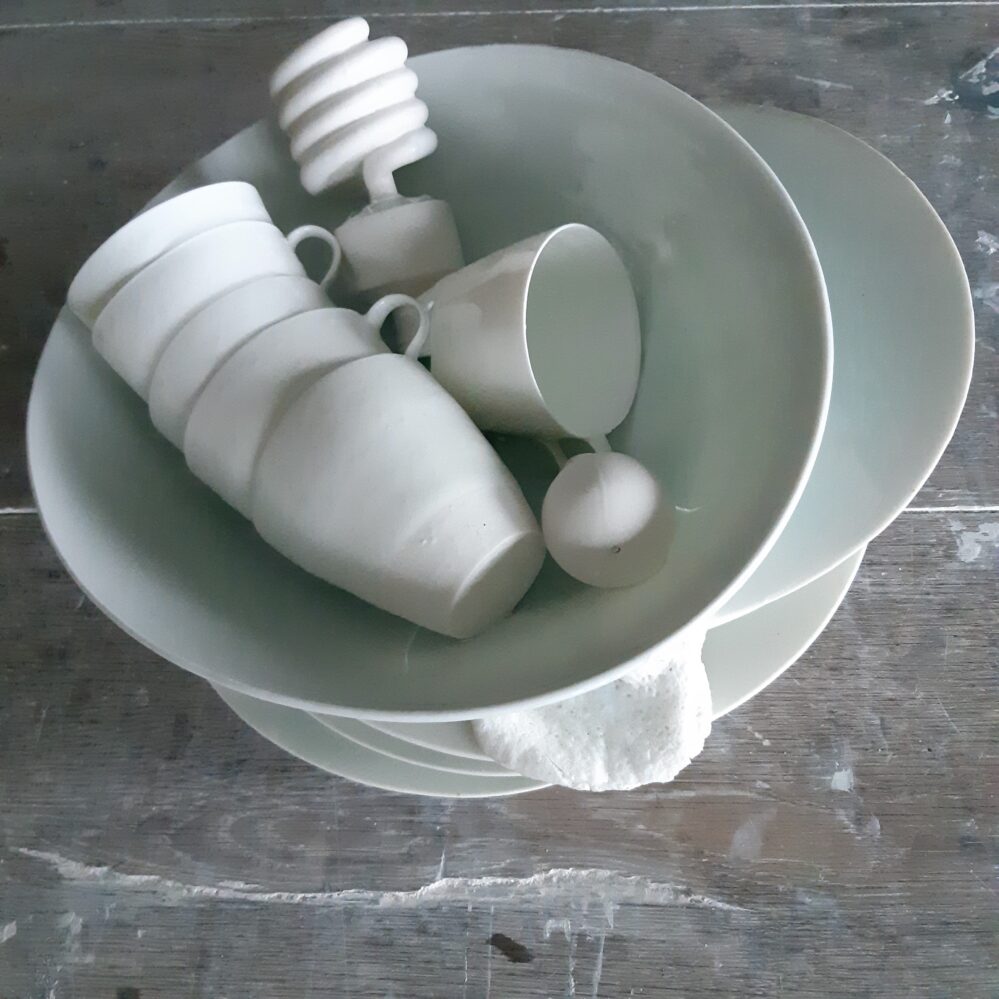
Window, Bowen Galleries May 2023
Wasters stacked and fired. The title from W.H. Auden’s poem, As I walked out one evening.
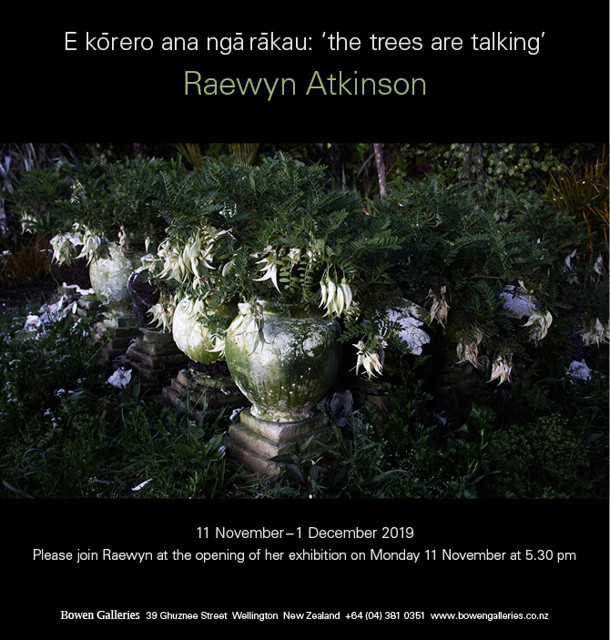
A suite of photographs from the moving image work I Too Am In Paradise II
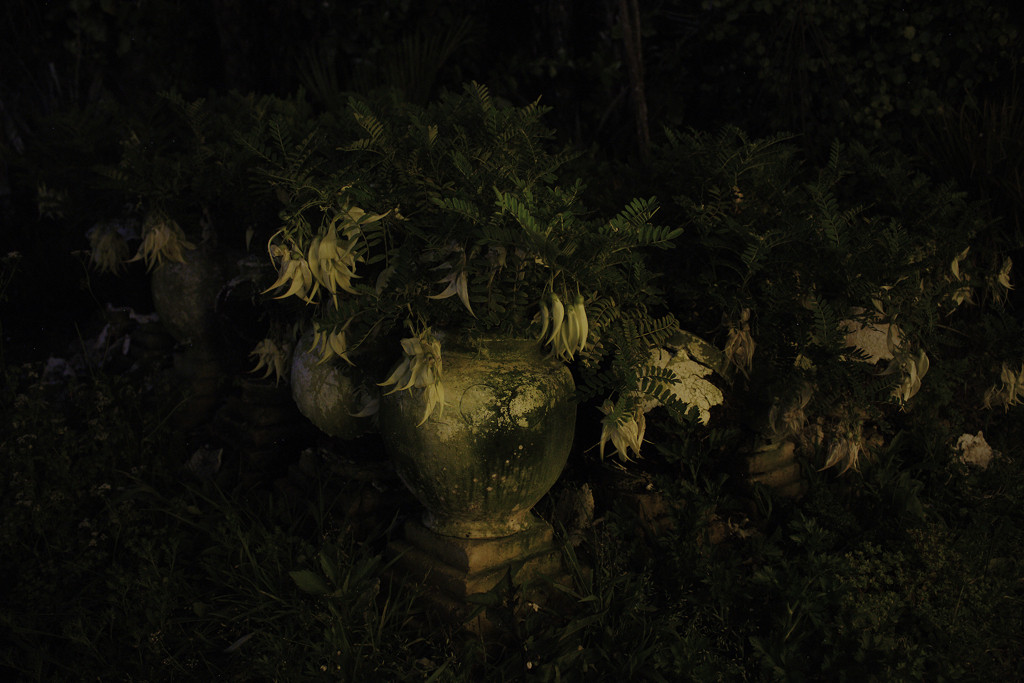
2019 still #1
Hahnemuhle Photo Rag 308gsm
560x840mm
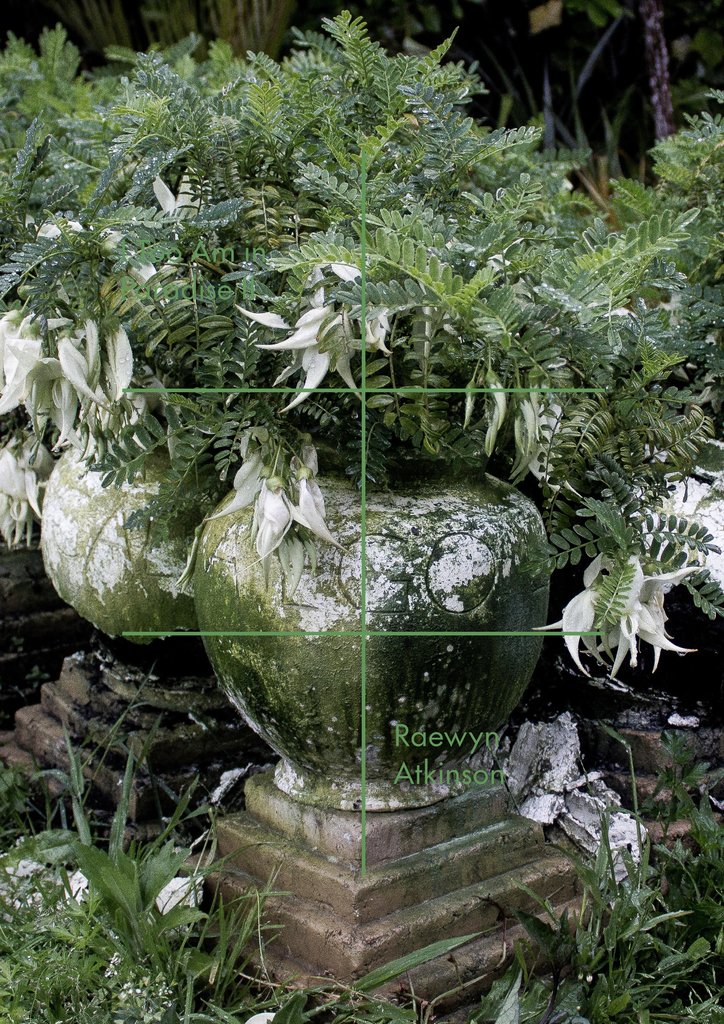
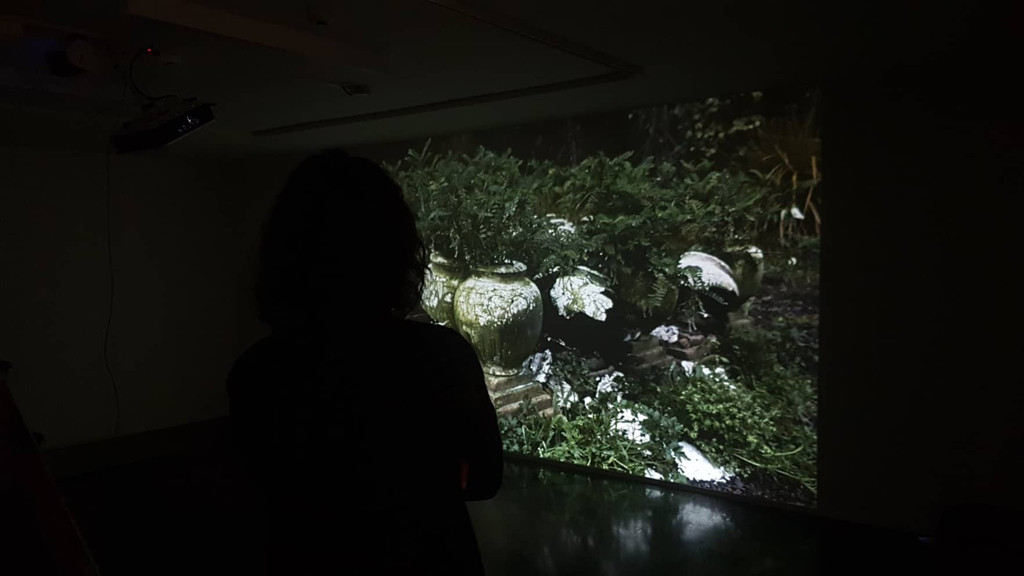
I Too Am In Paradise II, a 50 minute moving image work.
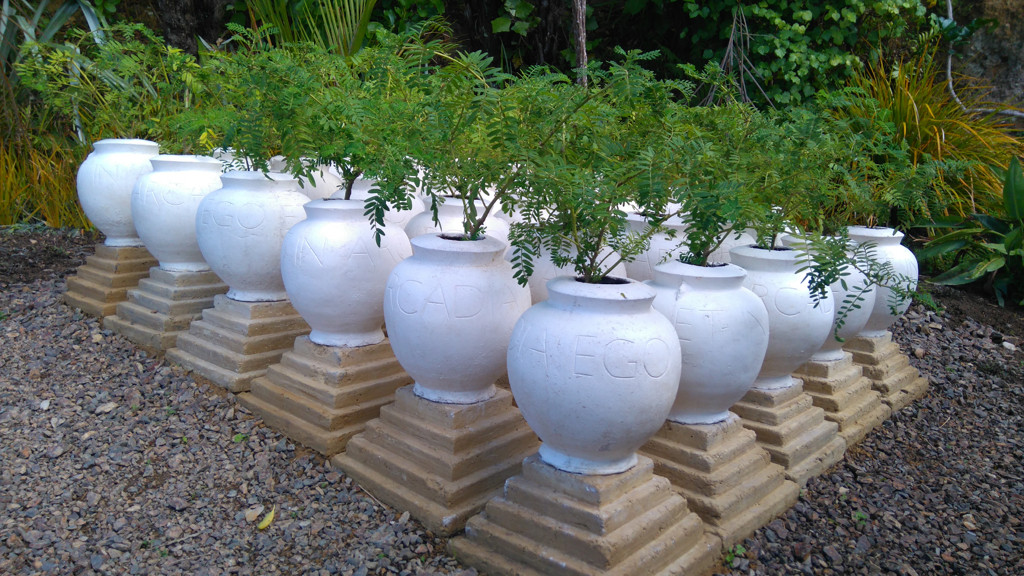
I Too Am In Paradise II is another iteration of the living sculpture installed in the Dowse Courtyard over the summer 2016-17. A video will be made of the installation as it decays and grows in the artist’s garden. Again the urns are cast using unfired white clay but this time red clay dug from the property has been used to create bases and these in turn are placed on a bed of greywacke from the same area.
The urns are planted with ngutukākā mā, white kākā beak, precious taonga entrusted to the project by East Coast iwi, Ngāi Kohatu (Ngāi Hinehika), who are kaitiaki for this particular species that had long been considered extinct. This plant species were last seen growing on cliffs inland from Wairoa in the 1950’s and have been brought back from the brink of extinction through the combined efforts of Ngāi Kohatu and the Crown Research institute, Scion. At Te Reinga Marae these kākā beak are known as Ngutukōrako, named after their ancestress, Hinekōrako. The English translation of kōrako is albino.
At the end of filming, the ngutukākā mā will be gifted on to Waikereru Ecosanctuary, set up for ecological restoration by Dame Anne Salmond and her husband on Te Tāi Rāwhiti/East Coast of New Zealand
“I Too Am in Paradise is a series of unfired clay urns, each bearing the phrase “Et in Arcadia ego” and containing a young kōwhai ngutukākā (kakabeak) plant.
Using the title of this renowned seventeenth century Nicolas Poussin painting, the words act as a momento mori, or a reminder of our mortality. I Too Am in Paradise is a living sculpture and will undergo an organic process while installed in The Dowse open air courtyard this summer. Depending on both the weather conditions and the type of care that the plants receive, the kōwhai ngutukākā will continue to grow and the unfired porcelain clay will gradually decay.
Kōwhai ngutu kākā plants are found only in New Zealand and all species that exist are threatened with extinction. They were originally used by Māori for gifting and trade and as these urns naturally degrade, the plants will be gifted to people in the community who would like to participate in the recovery of kōwhai ngutukākā.” The Dowse
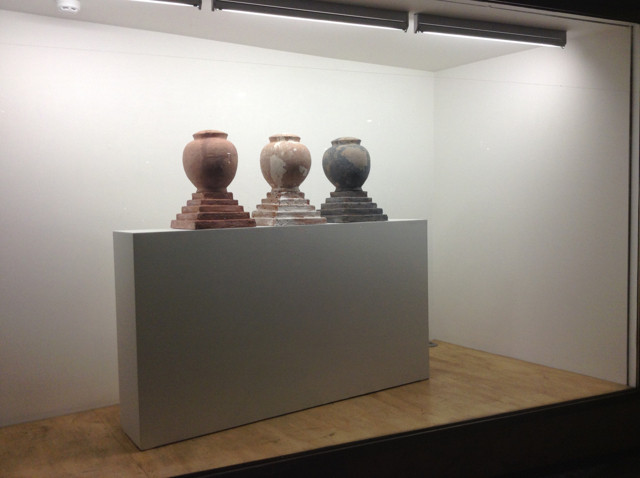
Window installation, Bowen Galleries, October-November 2016

Auckland Art Fair 2016, Bowen Galleries stand
slip cast porcelain, inscribed YOU DON’T KNOW, Tekapo glaze
ABOVE THE KITCHEN SINK Mark Amery on the exhibition Inspired: Ceramics and jewellery shaped by the past showing at Te Papa
“Raewyn Atkinson is interested in exploring the tension in ceramics between nature and culture. The fragility of the environment and the impact our use of it has is evoked powerfully, poetically in her work. Her 2013 series ‘Wasters’ (a term used to describe discarded or defective pieces of pottery) was inspired by shards recovered from the stretch of northern Californian shoreline used for more than 30 years as a dumping ground for the Tepco pottery factory. Atkinson clearly thinks deeply about what we place value in. Since returning to New Zealand, with a life more focused on family, she has returned to making vessels for use and shared experience, of which the porcelain wheel-thrown cups and plates from the 2014 ‘On a Plate’ series are an example. Dipped in an exquisite icy blue, they’re ordinary yet extraordinary, elegant yet cheekily pinched, minimalist yet creamy-full of natural and human character.”
Mark Amery
Altair Roelants on critical new directions in ceramics from Australia and New Zealand.
https://www.artlink.com.au/articles/4435/material-thinking-and-sustainability-in-contempora/